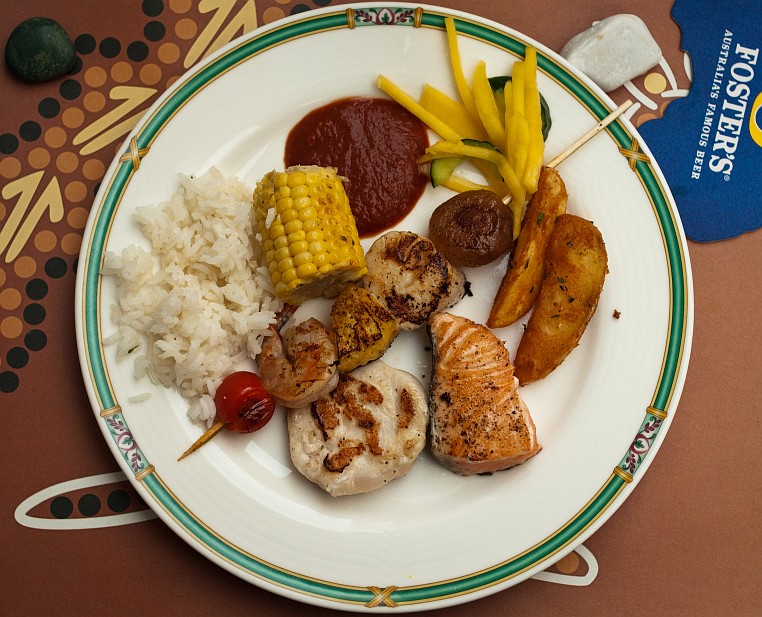Generations of people with stuffy noses and scratchy throats have been fed chicken soup as a cold remedy. But is there any science behind it, or is chicken soup simply the ultimate comfort food?
I may have an abiding fascination for food of all kinds, but deep down, I am a science girl. For example, I have never had much patience for the idea of food as a folk remedy. I am sure honey and garlic do have antimicrobial properties, (and they scare away vampires, too!) but I am pretty certain that they only cure colds the way the resveratrol in your evening glass of red wine makes you live longer or a butterfly stirs up a wind. It is all very scientific and true, just infinitesimal in scope. So whenever my mother told me she would cook chicken soup for my cold, I made polite noncommittal sounds and reached for the ColdRex. I love my meat stock like any other person, but it actually took an interesting tidbit of science to make me willing to try it instead of my usual cocktail of paracetamol (for the aches), caffeine (for energy), Vitamin C (better late than never) and fluids (against dehydration).
Aching for gelatine
It turns out that infection, and especially fever, makes you need more protein. A healthy adult of my weight (54 kg) requires about 43 grams of protein per day. However, in stress or illness, you would need twice as much, since your immune response would dictate more protein synthesis and use up amino acids (the building blocks of proteins) as fuel. And here comes the chicken soup: a good consommé can be up to 10% protein due to the gelatine leached from the bones, skin and meat, meaning that a big bowl of it could contain up to 50 grams – all of the additional protein required by your cold. (Trivia: most proteins in cooking congeal like egg whites. Gelatine is one of the very few that disperse in water if treated well, which allows stocks to be translucent, fluid food.)
Actually, to be honest, the protein angle is just me putting two and two together. To my knowledge, no scientist has ever tested this theory and it might be complete baloney.
Lab tests
However, some aspects of chicken soup have been examined in a lab. In 1978, Mount Sinai researchers in Miami looked at how chicken soup affected air flow and mucus in the noses of 15 volunteers who drank cold water, hot water or chicken soup. Both hot fluids helped increase the movement of nasal mucus, but chicken soup did a better job than the hot water.
In 2000, a sage of Omaha called Stephen Rennard made volunteers eat his wife’s soup and then drew their blood. He found that the soup inhibited the movement of neutrophils, the most common type of white blood cell. Dr. Rennard theorized that by inhibiting the migration of these infection-fighting cells in the body, chicken soup helps reduce upper respiratory cold symptoms. (Further explanation: as you might know, when we feel ill, we are actually feeling our immune system at work. Its primal – and most primitive – defense is to cause inflammation, thus burning out microbes. However, evolution has provided more sophisticated immunological mechanisms such as antibody-based responses that target specific bugs. In most cases, these work just as well, while inflammation tends to go into overkill, which means that uncomfortable inflammation or fever can be reduced without hindering your body’s defense capabilities.)
Chicken skin also contains the amino acid cysteine, an important building block of acetylcysteine, a medication prescribed for bronchitis. Chicken cysteine-rich proteins are extensively studied by immunologists, as a matter of fact.
Vegetable chorus
And all this is just the chicken, and we haven’t even started on the vegetables yet. Onions contain antihistamines that also reduce inflammation. Carrots are full of betacarotene, which is turned into immuno-hero Vitamin A. Parsnips bring Vitamin E, salt gets you the electrolytes needed for good fluid regulation. Black pepper (and the heat of the soup, of course) makes you sweat, which, as any doctor will tell you, is also an important part of ridding yourself of pesky rhinoviruses (cold) or influenza-A (flu).
It took a lot of research to make me even consider food as medicine. But what eventually convinced me that chicken soup is a lot better (if not less expensive) than the pills, was the empirical evidence: I felt better after a bowl of soup than after a mug of hot ColdRex.
So this flu season, why don’t you conduct your own tests?

